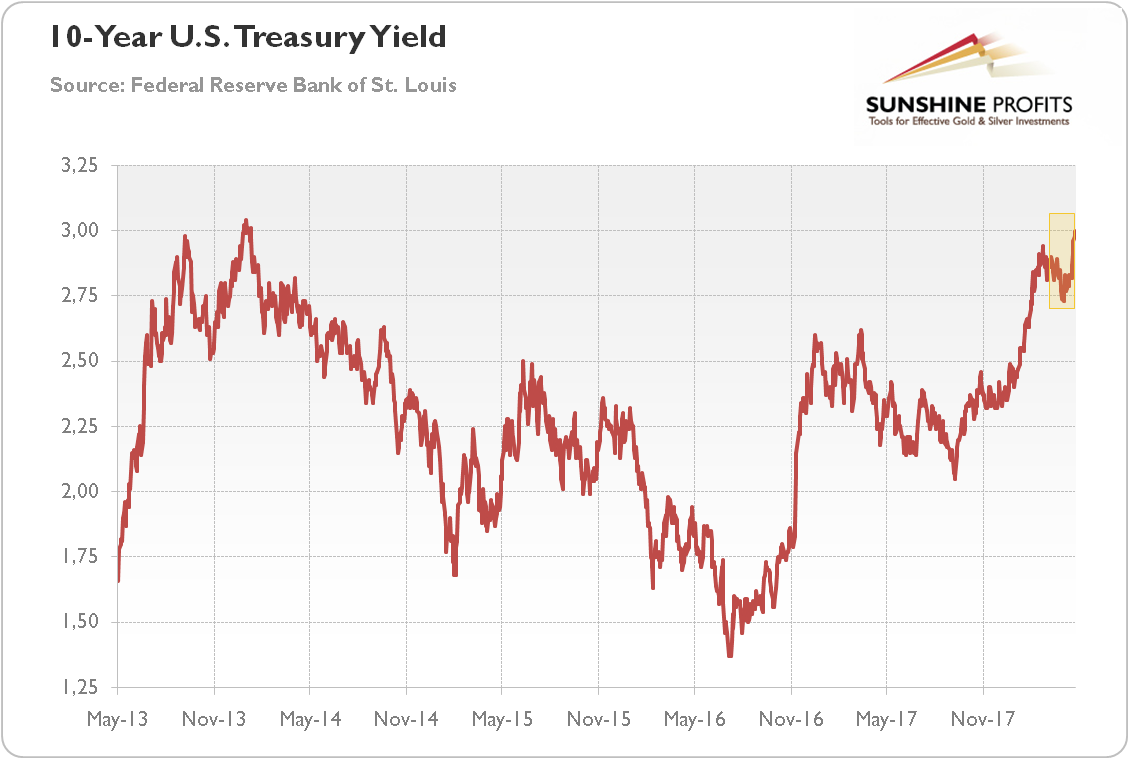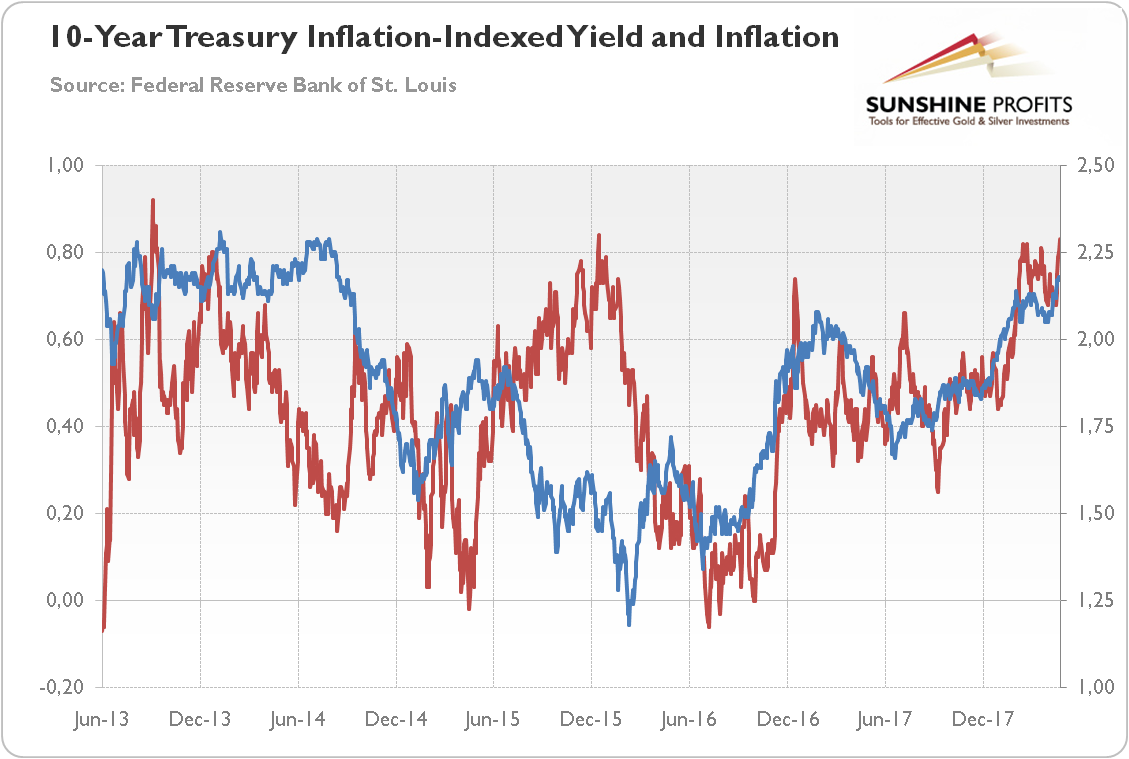Finally! The 10-year Treasury yield has hit 3 percent. What’s next for the gold market?
Here We Are, At 3%
So it finally happened. The 10-year U.S. Treasury yield reached 3 percent, a level not seen since early January 2014, as one can see in the chart below.

Chart 1: 10-year U.S. Treasury yield over the last five years (in %)
OK, so the yield on some bonds reached a certain level. Why should it be important? Well, the 10-year U.S. Treasuries are not ordinary bonds – their yields are the global bond market’s primary benchmark. So if they go up, other interest rates also increase, making the burden of debt heavier for everyone from students and households to corporations and governments.
Some could say that 3 percent is only a nice, round number. And there might be something in it. But investors shouldn’t disregard psychological levels as unimportant. According to many analysts, the 3 percent threshold could be critical to determining whether the secular bull market in bonds will end.
Is Armageddon Coming?
The 10-year Treasuries reached a milestone, fair enough. But what are the possible implications of that development? Well, it depends on the narrative. For many analysts, higher interest rates are likely hamper economic growth. They also argue that the rise is caused by inflationary pressures and the growing Treasury supply due to the easy fiscal policy. The economy is overheating, so it cannot end well. The increasing yields could, then, prompt the Fed to adopt a less hawkish stance. All of these arguments are bullish for gold.
However, there is also another narrative. The economy is expanding. So the U.S. central bank is normalizing its monetary policy. Hence, climbing yields signal an improving economy and the rising Fed’s confidence in that economy.
Which narrative is true? Well, let’s check, looking at some data. As a reminder, nominal interest rates can be divided into real interest rates and inflation compensation. The chart below shows both these components of the 10-year Treasury yield. As one can see in the chart below, both real interest rates and inflation have increased recently.

Chart 2: 10-year Inflation-Indexed Treasury Yield (red line, left axis, in %) and 10-Year Breakeven Inflation Rate (blue line, right axis, in %) over the last five years
So we can find grains of truth in both narratives. However, let’s note that real interest rates increased much more since September 2017. They more than doubled, while the inflation rate has increased about one fourth. What we are saying here is that we cannot explain rising yields only by inflationary pressures. Hence, the apocalypse may not be coming. It weakens the possible positive consequences for the gold market.
Conclusion
The economy fluctuates. The macroeconomic picture changes all the time. It’s normal. Now, we are heading into a regime with slightly higher inflation and higher yields. The question is whether the economy will adopt. We believe so. Surely, higher interest rates will be uncomfortable for some entities, that’s for sure. But the overall economy should eventually adjust.
The Fed has a difficult task. It understands that the monetary tightening may be harmful for some companies and households. But it also clearly notices high asset valuations. So the U.S. central bank has to steer carefully to hike interest rates gradually to prevent asset bubbles (so it may have actually welcomed the recent stock market correction), but not cause another recession. So, yes, the regime shifts can be bumpy. But this may be exactly what the Fed wants – just to avoid another asset bubble.
Will it succeed? Well, the Fed’s track record is rather poor (what a surprise: central planning just does not work). But the mere fact that U.S. Treasury yields reached 3 percent should not end the world. It’s just the number. It’s an important number, but, hey, interest rates used to be much higher in the past. We mean that gold will eventually shine – the Fed’s error is just a matter of time – but not necessarily now. Actually, the opposite is true. Rising interest rates may eventually elevate the U.S. dollar, which would sink gold. Yesterday, gold dropped to a five-week low, as the greenback jumped. This may be a warning. Stay tuned!
Thank you.
